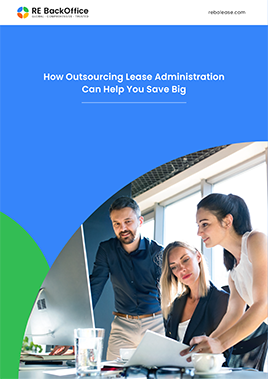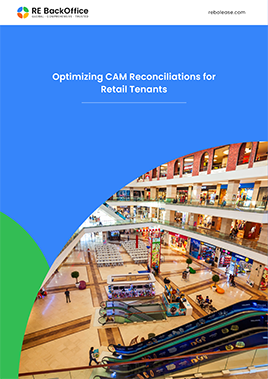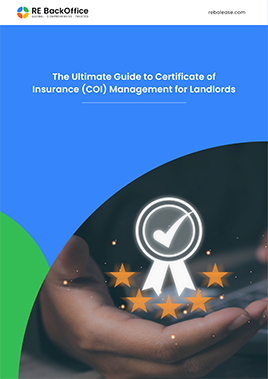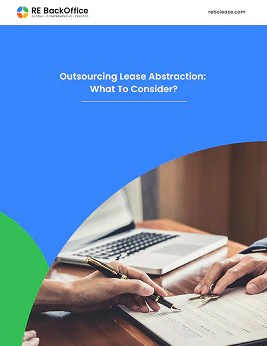
Managing lease agreements can be a complex and time-consuming process, especially for businesses that handle multiple leased properties. Whether in corporate real estate, retail, healthcare, or any other industry, tracking lease terms, monitoring rent payments, ensuring compliance, and managing financial obligations can quickly become overwhelming. Traditional methods such as spreadsheets and manual record-keeping are not only inefficient but also prone to errors, which can lead to missed payments, compliance violations, and financial losses.
To address these challenges, businesses are increasingly turning to Lease Administration Software—automated solutions that centralize lease data, ensure compliance with accounting standards, and streamline financial reporting. These platforms provide businesses with tools to enhance lease management efficiency, reduce administrative burdens, and improve decision-making by offering real-time insights into lease portfolios. In this article, we will explore the key features, benefits, selection criteria, and best practices for implementing a lease administration software platform.
What is Lease Administration Software?
A Lease Administration Software Platform is a specialized digital solution designed to automate and optimize the management of lease agreements. It acts as a central hub for lease data, enabling organizations to track, analyze, and manage their lease obligations effectively. These platforms help businesses reduce manual workload, improve compliance, and gain visibility into lease-related financial commitments.
Key functions of lease administration software include:
- Centralized Lease Database: Stores all lease agreements, amendments, and supporting documents in one location.
- Automated Lease Accounting Compliance: Ensures compliance with standards such as ASC 842, IFRS 16, and GASB 87.
- Critical Date Notifications: Alerts users about lease renewals, expirations, rent increases, and compliance deadlines.
- Rent Payment & CAM Reconciliation: Automates payment tracking and common area maintenance (CAM) cost calculations.
- Financial Reporting & Analytics: Provides detailed insights into lease obligations and financial impact.
By using a lease administration software platform, businesses can enhance efficiency, minimize risks, and make data-driven leasing decisions.
Key Features of a Lease Administration Software Platform
An effective lease administration software platform provides a comprehensive set of features that simplify lease tracking, compliance, and financial management. Here are some essential features to look for:
1. Centralized Lease Data Management
Instead of maintaining lease documents across multiple systems or spreadsheets, a lease administration platform consolidates all lease-related data into a single repository. This ensures that lease administrators, finance teams, and property managers can access accurate and up-to-date information from one location.
2. Automated Lease Accounting & Compliance
Managing lease accounting manually can be complex, especially with evolving financial regulations. Lease administration software:
- Automates calculations for lease liabilities and right-of-use (ROU) assets.
- Ensures compliance with global accounting standards like ASC 842, IFRS 16, and GASB 87.
- Reduces errors and enhances audit preparedness.
3. Critical Date Tracking & Alerts
Missing critical lease dates can lead to costly penalties, missed renewals, or unnecessary lease extensions. A lease administration software platform provides:
- Automated reminders for lease expirations, renewals, and rent adjustments.
- Customizable notifications to ensure users stay ahead of key deadlines.
4. Rent Payment & Invoice Management
Late or incorrect rent payments can result in financial penalties and disputes. Lease administration software streamlines:
- Rent payment tracking and automated processing.
- Integration with accounting systems to ensure accurate financial reporting.
- Visibility into past and upcoming payments.
5. CAM Reconciliation & Expense Management
Common Area Maintenance (CAM) expenses can be complex to track, especially for businesses leasing space in shared properties. The software:
- Calculates CAM charges based on lease agreements.
- Tracks recoverable vs. non-recoverable expenses.
- Ensures accurate reconciliation of operating expenses with lease terms.
6. Reporting & Data Analytics
Lease administration software provides customizable reports that offer insights into:
- Lease obligations and financial exposure.
- Portfolio performance and lease efficiency.
- Cost-saving opportunities through lease restructuring.
7. Integration with ERP & Accounting Systems
Integration with ERP and accounting systems enables seamless data flow between lease administration and financial platforms. This ensures accuracy, reduces manual data entry, and minimizes errors. Automated synchronization enhances reporting efficiency and compliance. A well-integrated system improves financial transparency and decision-making.
8. Secure Document Management
A robust lease administration platform includes document management features such as:
- Secure cloud storage for lease agreements and amendments.
- Version control to track changes over time.
- Role-based access to ensure sensitive data is protected.
Benefits of Using a Lease Administration Software Platform
Implementing a lease administration software platform provides several benefits that enhance operational efficiency and financial control.
1. Improved Efficiency & Time Savings
Automating lease tracking, payments, and compliance tasks reduces manual effort, allowing lease administrators to focus on strategic initiatives instead of routine paperwork.
2. Enhanced Accuracy & Compliance
With built-in lease accounting tools, businesses can:
- Avoid errors in lease calculations.
- Ensure compliance with financial regulations.
- Generate accurate reports for audits and financial statements.
3. Cost Savings & Lease Optimization
By tracking lease expenses and CAM charges accurately, organizations can:
- Identify cost-saving opportunities.
- Negotiate better lease terms.
- Reduce unnecessary expenses.
4. Better Financial Decision-Making
Having all lease data in a centralized system provides real-time insights, helping executives make informed decisions about:
- Lease renewals and terminations.
- Portfolio expansion or downsizing.
- Expense forecasting and budgeting.
5. Risk Reduction & Financial Control
Automated notifications for lease obligations help businesses mitigate risks by preventing:
- Missed rent payments.
- Non-compliance with lease accounting standards.
- Legal disputes over lease terms.
How to Choose the Right Lease Administration Software
Selecting the best lease administration software requires careful evaluation of business needs, compliance requirements, and system capabilities. Consider the following:
1. Business Requirements
- Do you manage real estate leases, equipment leases, or both?
- Is your primary goal to ensure compliance or improve lease tracking?
2. Compliance with Lease Accounting Standards
- Ensure the platform supports ASC 842, IFRS 16, and GASB 87.
- Look for automation features that simplify compliance reporting.
3. Integration Capabilities
- Can the software connect with your ERP, accounting, and property management systems?
- Does it support API access for custom integrations?
4. User-Friendliness & Accessibility
- Is the platform easy to use for finance teams and lease administrators?
- Does it offer mobile access for remote management?
5. Security & Data Protection
- Does it include role-based access controls?
- Is data encrypted and backed up securely?
A Lease Administration Software Platform is an indispensable tool for businesses managing multiple leases. It provides automation, enhances accuracy, and ensures compliance with lease accounting standards. By implementing the right solution, organizations can streamline lease management, reduce costs, and improve financial transparency.
Choosing the right lease administration software requires a thorough evaluation of features, integration capabilities, and compliance support. With the right platform in place, businesses can confidently manage their lease portfolios, mitigate risks, and drive better financial outcomes.


